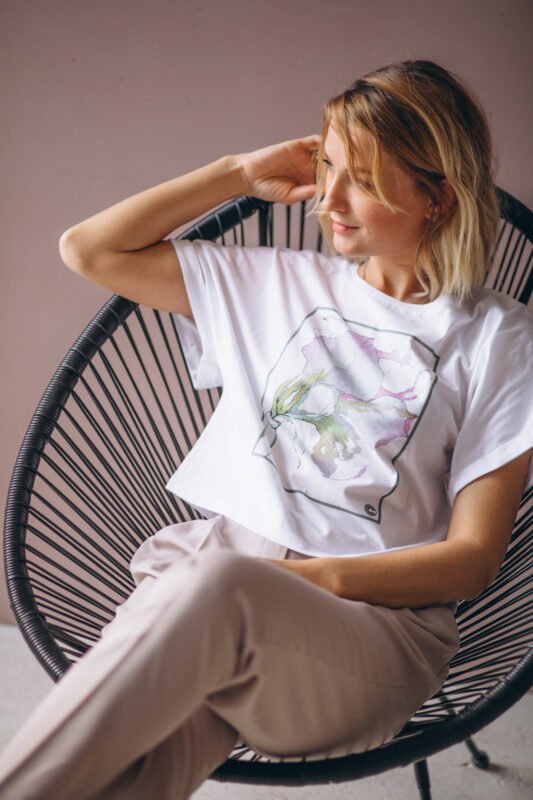Blog
How to Choose the Perfect Design for Your Custom T-Shirt
Custom t-shirts are a fun, creative way to express your personality, commemorate special events, or promote a brand. Whether you’re designing a t-shirt for a birthday, a corporate event, or just as a personal wardrobe statement, choosing the right design can be a bit tricky. With so many options out there, it’s essential to focus on the occasion, personal style, and fabric type to create something that stands out.
Here are some tips on how to choose the perfect design for your custom t-shirt.
1. Consider the Occasion
The first step in selecting the right design is to think about the occasion. What’s the purpose of the custom t-shirt? Are you designing it for a special event, like a wedding or a birthday party? Or maybe it’s for a corporate event, a fundraiser, or a festival? The occasion can greatly influence the design.
- Casual Everyday Wear: If the t-shirt is for casual everyday wear, go for something that aligns with your personal taste. Whether it’s a simple graphic, an inspirational quote, or a unique pattern, make sure it reflects your personality.
- Special Events (Weddings, Birthdays, etc.): For special occasions, you might want to go for more tailored designs. For example, if you’re designing t-shirts for a wedding, something minimalistic and elegant with a custom monogram can be a perfect fit. For birthdays or other celebrations, fun and bold graphics that include names, dates, or themed elements are always a hit.
- Corporate or Branding: If you’re designing a shirt for a business or event, the design should focus on your company’s branding. Incorporate your logo, brand colors, and a message that connects with the audience you’re targeting. This is especially important for events like conferences, trade shows, or promotional giveaways.
2. Reflect Your Personal Style
Your custom t-shirt should be an extension of your personal style. Think about what types of designs you typically gravitate toward in your wardrobe. Do you prefer minimalist, subtle designs, or are you drawn to bold, colorful patterns? Here are some ways to express your style through your t-shirt design:
- Minimalistic Designs: If you like to keep things clean and simple, opt for understated designs. You can go for small graphics, text-based designs, or even monochromatic schemes that complement your style. A minimalist logo, a short quote, or geometric patterns might be right up your alley.
- Bold and Vibrant: For those who love to make a statement, go for eye-catching graphics. Bright colors, large images, or intricate illustrations can bring life to your design. If you’re someone who loves to stand out, don’t be afraid to experiment with unique designs, from pop culture references to abstract art.
- Vintage or Retro: Vintage designs never go out of style. If you’re into nostalgic fashion, think about incorporating retro fonts, old-school logos, or classic graphics into your design. A distressed look can also give your shirt that perfect worn-in vibe.
- Nature or Artistic Elements: If you love the outdoors or art, consider incorporating these elements into your design. Nature-inspired graphics—like plants, animals, or landscapes—can create a serene and earthy look, while artistic sketches or paintings can add a more avant-garde flair.
3. Match the Fabric Type to Your Design
The fabric of your t-shirt can have a significant impact on the final look and feel of the design. Some fabrics may be better suited to specific types of designs, so it’s essential to consider how the material interacts with your artwork. Here are some key fabric types to consider when choosing your design:
- Cotton T-Shirts: Cotton is one of the most popular fabric choices for t-shirts because it’s soft, breathable, and comfortable. It’s also highly versatile when it comes to printing designs. Both light and dark colors work well with cotton, and it can handle various printing techniques such as screen printing, direct-to-garment (DTG), or heat transfer.
- Polyester or Blends: Polyester t-shirts or cotton-polyester blends are often used for performance wear, sports teams, and activewear. These fabrics are moisture-wicking, lightweight, and quick-drying. However, due to their synthetic fibers, designs may look different compared to cotton. For polyester, sublimation printing works best because it absorbs the dye better and provides vibrant colors.
- Tri-Blend Fabrics: A tri-blend fabric combines cotton, polyester, and rayon, creating a super soft and vintage feel. These shirts tend to have a slightly heathered look and are often used for creating a more worn-in aesthetic. For tri-blends, choose designs that will look good on a softer, more textured surface—think of soft typography, small logos, or subtle graphics.
- Fitted vs. Loose T-Shirts: If you’re opting for a fitted style, make sure your design is proportional to the fit of the shirt. Tight-fitting shirts tend to look better with smaller, more compact designs. On the other hand, if you’re designing for a looser or oversized shirt, you can go bigger with your graphic or even cover more of the shirt with a bold, all-over print.
4. Consider the Colors of Your Design and Shirt
Color plays a crucial role in the success of a custom t-shirt design. The contrast between your design and the shirt color can make or break the overall look. Here are a few things to consider:
- Contrasting Colors: If you want your design to pop, ensure there is a good contrast between the shirt color and the design. Light designs on dark shirts or dark designs on light shirts usually create a visually appealing effect.
- Match the Mood: Think about the mood or vibe you want your t-shirt to convey. Bright colors can evoke a fun, energetic feeling, while muted tones or monochrome designs are more sophisticated and timeless.
- Branding and Consistency: If you’re designing for a business or event, make sure the colors of your design align with your branding guidelines. This ensures consistency across your promotional materials and helps with recognition.
5. Think About the Longevity of Your Design
Custom t-shirts are a long-term investment in your personal or business wardrobe, so it’s important to choose a design that will last both in terms of style and durability. Consider the following:
- Timeless Designs: If you’re designing a shirt you want to wear or sell for years, choose designs that have a timeless appeal. Classic logos, phrases, or illustrations will still look great down the line.
- Print Quality: Make sure the design is high resolution and suitable for the chosen printing method to ensure it holds up over time without fading or cracking.
- Material Durability: High-quality materials and printing methods will make sure the design lasts, even after multiple washes. Always choose a reliable printing company that uses durable inks and ensures the best results for your fabric choice.
Conclusion
Choosing the perfect design for your custom t-shirt is an exciting process that allows you to express your personality and creativity. By considering the occasion, your personal style, the fabric type, and the longevity of your design, you can create a t-shirt that stands out and lasts. Whether it’s for a special event, business promotion, or casual wear, the right design will make sure your custom t-shirt reflects your unique style and leaves a lasting impression.
Remember, a great design is all about blending creativity with practicality—so take your time, experiment with ideas, and choose something that feels just right for you!


Hi, this is a comment.
To get started with moderating, editing, and deleting comments, please visit the Comments screen in the dashboard.
Commenter avatars come from Gravatar.